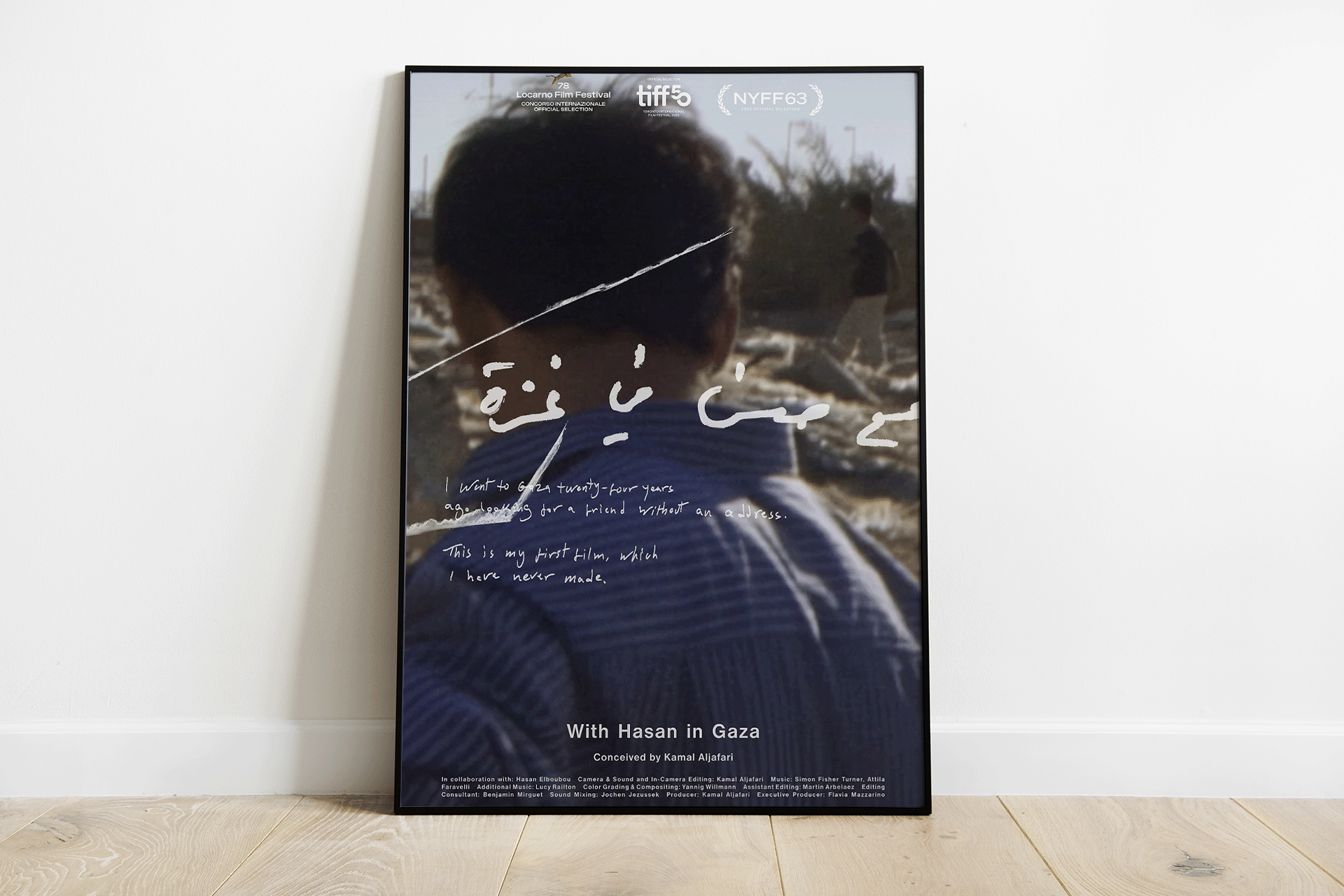Published On 8/9/2025
|
Last updated: 20:13 (Mecca time)
The movie “With Hassan in Gaza” competed in the official competition of the “Locarno” Film Festival, where he nominated the Golden Fahd Award, and won the “Europa Cinemas Label Award”.
“With Hassan in Gaza” directed by Kamal Al -Jaafari, and it is also expected to be shown at the activities of the “Toronto” International Film Festival, as well as at the “London” Film Festival of the British Film Institute (BFI).
Read also
list of 2 itemsend of list
Gaza, which was taken by the camera
In November 2001, in the midst of the second Palestinian intifada, director Kamal Al -Jaafari began documenting his search for a man who participated in the prison in Gaza in 1989, and he was accompanied by a man named Hassan as his guide. Years later, Al -Jaafari re -discovered the video materials, preserved on 3 Minidv strips, which later formed the basis of his movie “With Hassan in Gaza.”
“With Hassan in Gaza” reviews a picture of Gaza a quarter of a century ago, Gaza, which, despite its passage at the time in the uprising and the accompanying pressure on its residents and unbearable situations, seemed radically different from Gaza today, whose people live in a complete human tragedy.
The film presents a geographical and anthropological panorama to Gaza at the beginning of the millennium, so the director moves with its portable lens between its neighborhoods and its various regions with its guide “Hassan”. He depicts children on the seashore, who are accompanied by their newly -off father from the detainee, trying to compensate them for his long, forced absence. Then he wanders in the small Gaza lanes, documenting the houses exposed to daily bombing, and the anger of women who destroyed their homes in front of their eyes, and they find nothing but moving from one place to another in search of a safe patch for one night. It also goes through the cafes where unemployed men sit because of the bombing, and most of the stores and places of work were closed, so they spend their time in entertainment games in which they mix the papers with their sharp sarcasm and their pent -up anger from themselves and all that surrounds them.
Then the director takes the viewers to a house in which his friends gather, where they continue their simple family lives despite the clear threat, laughing at the simplest jokes, eating the gaze food at a table that brings people from east and west, and depicts young children over the age of 30 if they are still alive.
In another context, the content of the tapes that Kamal Al -Jaafari may be seen as an emitter of nostalgia, or the Nostalgian Pope of an ancient version of the place of change necessarily with time. However, it is now only a window on sadness and an endless sadness on Gaza, which was taken by the camera and is no longer present on the ground, and on people filmed by Al -Jaafari.
Without knowing today whether any of them is still alive.
To transform “with Hassan in Gaza”, as Kamal Al -Jaafari himself described it, into: “Greetings to Gaza and its people, and to everything that is erased and then returned to me at this urgent moment of the Palestinian presence, or the non -existence. It is a movie about the disaster, and the poetry that resists.”
From forgotten tapes to live memory
Director Kamal Al -Jaafari last year presented another film on Palestine, which is erasing the memory of the world in front of our eyes, which is “The Film Action”. During the year 2024, the film was transmitted between a number of international cinematic festivals, and won a wide estimate that won the jury award at the Visions du Réel festival, one of the most prominent international festivals specialized in documentaries.
Al -Jaafari returns in “The Film Action Action” to the archive as a living substance through which he re -installs the story, and it is formulated from the shots that extend through contracts of visual narration facing the occupation violence and blurring it to Palestine. Since the Nakba, the Israeli occupation has worked to obliterate the Palestinian identity and erase its heritage by various means, the most prominent of which was the targeting and destruction of the Palestinian archive.
The film represents a prominent model of how to use archive materials in building a cinematic narration that is followed as if it was a text specially prepared for the screen, as it depends on the clips filmed over many years, and it is reshaped by montage supported by music and songs, to formulate a coherent work in which the viewer accompanies the details of the rupture caused by the Israeli occupation in the body of Palestine.
From this angle, the “film is a guerrilla act” with “Hassan in Gaza” in their dependence on video clips from the past to build a narrative that reveals the attempts of the Israeli occupation to erase the Palestinian presence as if it were not. However, “The film is a guerrilla act” based on general archive images, while it tends “with Hassan in Gaza” to more personal and intimate shots. Despite the absence of the director from the screen, the spectator realizes that he is the one who holds the small camera and chooses what he picks up.
This personal dimension increases with the progress of the film, as it begins with shots from 2001 that necessarily calls for the image of those places today compared to what it was. The director reveals, through a few lines written on the screen, the reason that prompted him to take this trip in Gaza, which is his search for a friend he knew during his arrest in his early youth before he started his cinematic career and studying him abroad.
Kamal Al -Jaafari has only his small lens, the name of the friend who does not know whether he is alive or left, and a story that he disclosed at the end of the film about that boy who represented the spirit of rebellion in the detainee, and faced the prisoners boldly that might be exposed to death. This friend left an unimaginable impact on the young Jaafari memory during his imprisonment during the first intifada, and he remained present in his consciousness until he pushed him during the second intifada to search for him, to present after “The Flood of Al -Aqsa” a film documenting that trip.
Al -Jaafari forgot the three tapes that he photographed with Hassan in 2001, then he returned to discover that it is worth showing on the big screen, to become a visual testimony that led to the birth of his movie “With Hassan in Gaza”, and perhaps a final document embodies the features of Gaza before it was devoured by the continuous Israeli bombing.
(Tagstotranslate) Art (T) Films and Cinema

